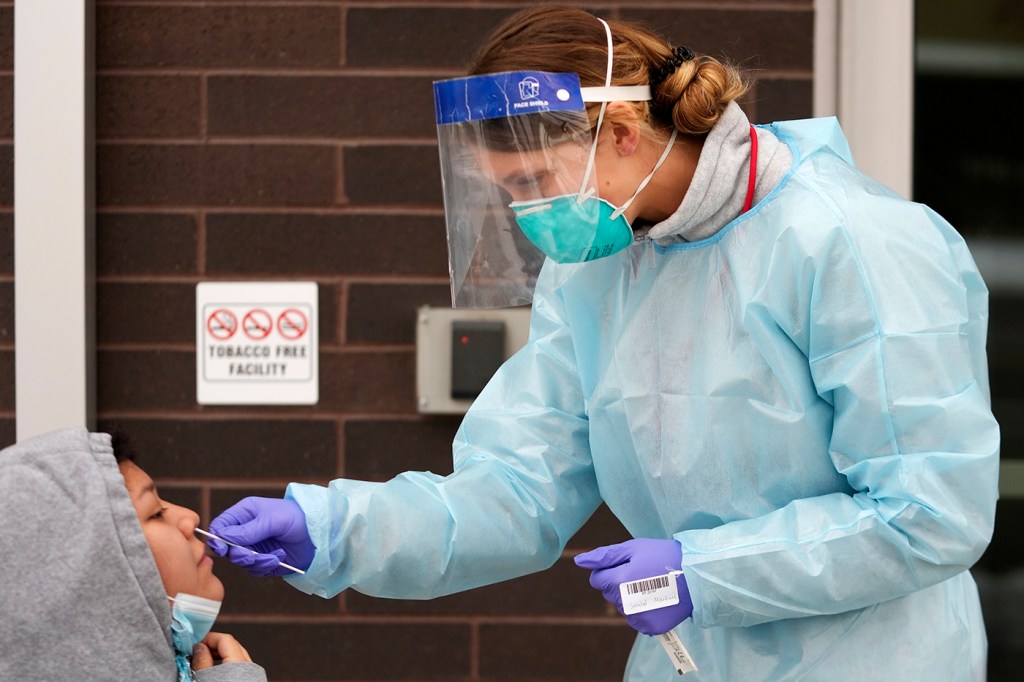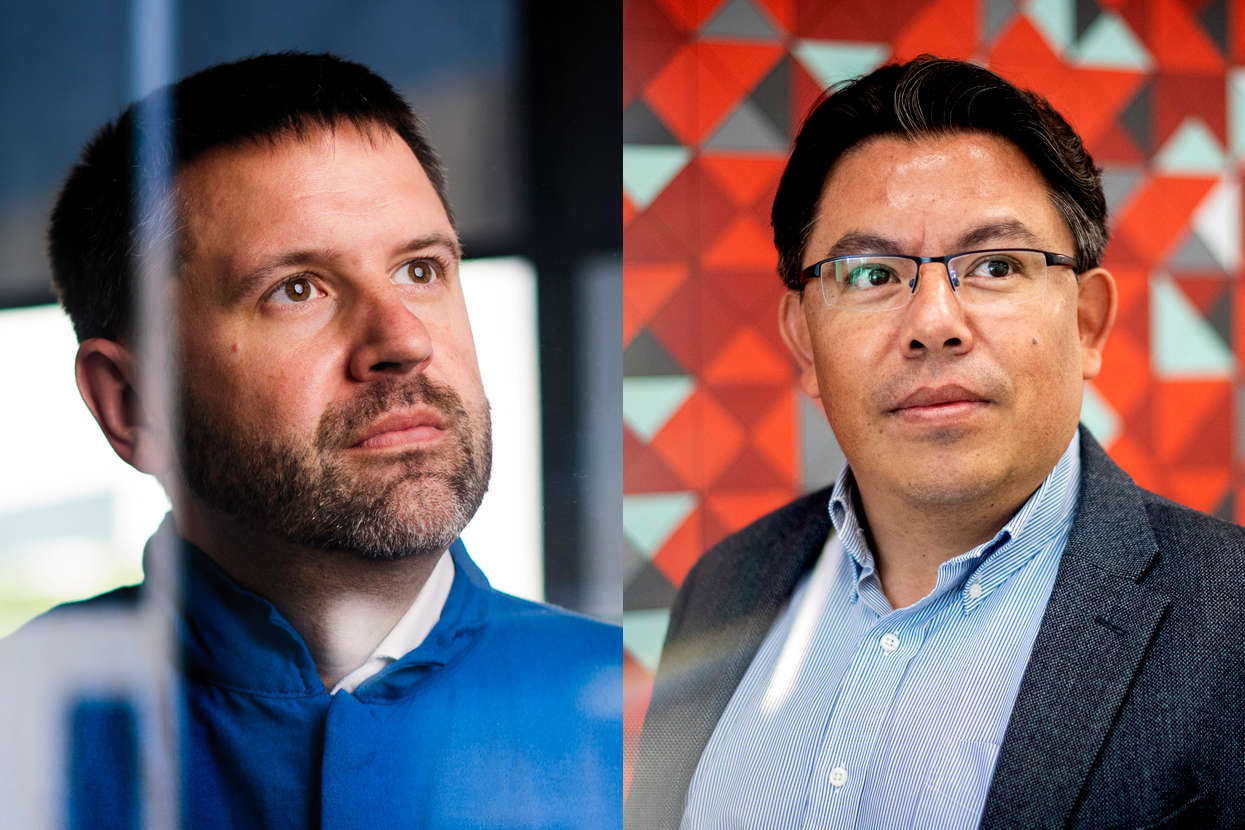New highly transmissible COVID-19 subvariant won’t swamp US hospitals, Northeastern experts predict

The COVID-19 subvariant XXB.1.5 is spreading so fast that the World Health Organization last week advised people to wear masks in certain situations, including in crowded, enclosed and poorly ventilated spaces, regardless of local infection rates.
The announcement came three days after the WHO recommended that people mask up on long-haul flights, according to Reuters.
Two experts at Northeastern University say the new Omicron subvariant is so transmissible it will cause a wave of illness, but they do not anticipate it will overwhelm hospitals and emergency rooms.
“It follows a trend of more infectious, less deadly,” says Jared Auclair, director of bioinnnovation at Northeastern’s Office of the Provost.
“We’ll definitely, definitely have another wave,” says Mauricio Santillana, a Northeastern University physics professor and expert in machine learning who is part of a team that monitors COVID-19 cases in the U.S. “I’m cautiously optimistic that even if we see an explosion of cases, it will not be as bad as previous waves.”
Protection from vaccination and previous COVID-19 infections likely offers some hedge against the new subvariant causing severe illness, Santillana says.
“Our bodies have seen at least one version already,” he adds.
COVID-19 infections are currently raging through China, which until recently had a zero tolerance policy for infections and has a poorer track record than other developed countries of vaccinating elderly people more susceptible to severe illness from COVID-19.

In the U.S., the percentage of COVID-19 cases attributable to XXB.1.5 is skyrocketing.
For the week ending Jan. 14, 43% of all U.S. cases stemmed from the new subvariant, compared to just 2.3% for the week ending Dec. 3, 2022.
The lion’s share of XXB.1.5 cases are in the Northeast, accounting for nearly all COVID-19 cases in New England and New York, 81.7% and 82.7%, according to the CDC.
The new Omicron subvariant is responsible for fewer COVID-19 cases in the West—15.8% in California, Nevada and Arizona and 8.1% in Washington, Oregon and Idaho—but Western states will soon catch up, scientists say.
Preliminary assessments indicate XXB.1.5 is more infectious than other Omicron subvariants because it binds more tightly to cells, increasing the chance of uptake, Auclair says.
It’s hard to tease out how much of the bump in cases is due to holiday travel and gatherings and how much is due to the increased infectiousness of XXB.1.5, Auclair says.
Far fewer people are getting PCR tests from which positive results are reported to public health officials, Auclair says.
Many individuals with symptoms are relying on at-home rapid antigen tests, and some people have such mild symptoms they consider their infection the common cold and do not bother to test at all, he says.
January of 2022 his lab in Burlington was processing 8,000 COVID-19 tests from the university and public schools and partners in a 24-hour period; now the lab does 100 tests a week, Auclair says.
“Last January, the original Omicron spike was very intense. I don’t expect to see that with this variant for a whole host of reasons,” including improved therapeutics, he says.
Even so, people who are elderly and immunocompromised remain at highest risk of severe illness and death, Santillana says.
He says it’s important that people who have symptoms or who are ill wear facial masks to reduce the spread of illness and to take a rapid test if they experience symptoms.
“I would like people to be more responsible,” Santillana says.
Since February the federal government has required people working or visiting federal buildings to wear masks when the community COVID-19 infection rate is high.
WHO factored local infection rates into mask guidelines until Friday, when it updated guidance to advise mask wearing in certain situations “irrespective of the local epidemiological situation, given the current spread of the COVID-19 globally.”
It says masks are recommended “following a recent exposure to COVID-19, when someone has or suspects they have COVID-19, when someone is at high-risk of severe COVID-19, and for anyone in a crowded, enclosed, or poorly ventilated space.” Previously, WHO recommendations were based on the epidemiological situation.
Auclair says, “It’s a good time to remind people to do all those things that we were doing a year ago, and that we might have slacked off on. Make sure you have your booster shots, make sure that you wash your hands, make sure that you’re vaccinated and have your booster shots.”
“And if you’re sick, wear a mask,” he says.
Cynthia McCormick Hibbert is a Northeastern Global News reporter. Email her at c.hibbert@northeastern.edu or contact her on Twitter @HibbertCynthia






